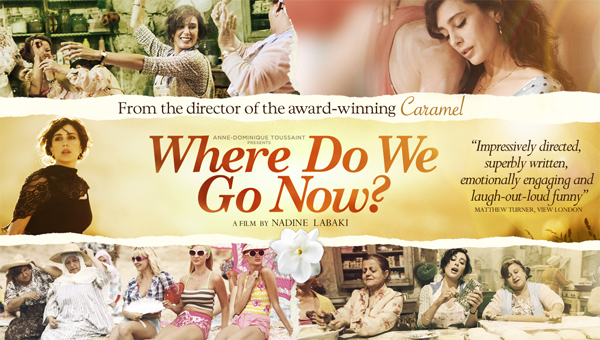Where Do We Go Now Review

Dressed and dancing in black, a procession of female mourners advance across the land before them.
Eventually, they spill into a religiously segregated graveyard and lay down flowers along with their grief.
Over these funereal shots of a desolate Lebanese town, a narrator gives us some context to this community’s troubled past set against the barren backdrop of images from this world.
So begins Where Do We Go Now?, Nadine Labaki’s meditative exploration of religious intolerance.
The plot focuses on an unnamed village where a tense but happy harmony exists between Muslim and Christian communities. But as religiously motivated fighting erupts nearby, the precarious peace in the village starts to deteriorate.
Small skirmishes begin to break out as someone lets goats defile a mosque, before chicken blood ends up in a church as a riposte.
All signs point towards conflict, yet through these escalating skirmishes the women of the town try to hold together their splintering community.
They burn newspapers, sabotage television sets and force changes in conversation as they desperately try to lock out the outside world and preserve their local peace.
They even go so far as hiring exotic dancers, hoping their foreign flesh will distract the men from violent thoughts, with the womenfolk arranging for said dancing troupe to fake their bus breaking down before seeking shelter in the town.
All seems well until the death of a young village man outside their town threatens to provide the spark to ignite this powder keg situation. And in an effort to avoid further conflict, the women undertake an even more drastic plan to save their town.
Following up from her sweet directorial debut of Caramel, Nadine Labaki has chosen a less palatable but even more deserving subject for her Where Do We Go Now?
More akin to a modern fairy-tale then a socially charged comedy or drama, Labaki’s choice to make this film without adhering to one particular genre have forced her to forge a unique film.
Seamlessly blending fantastical dreams sequences, musical interludes, comic reprieves, and stark moments of charged drama, Labaki has created a film imbued with magical surrealism that yokes together seemingly disparate stylistic and formal choices in a potent culmination.
With exceptional performances from Labaki herself as Amale a café owner, and Yvonne Maalouf as the Mayor’s wife in particular bringing to life complex and strong female characters you don’t often see.
Both women are captivating on screen and the strong dialogue makes the other characters believable and more memorable, yet it is Labaki’s direction which is most noteworthy.
Where Do We Go Now? eschews traditional cinematic conventions to come up its own style of film.
Maybe that’s the direction Labaki had in mind for this film all along.
Shelton Lindsay